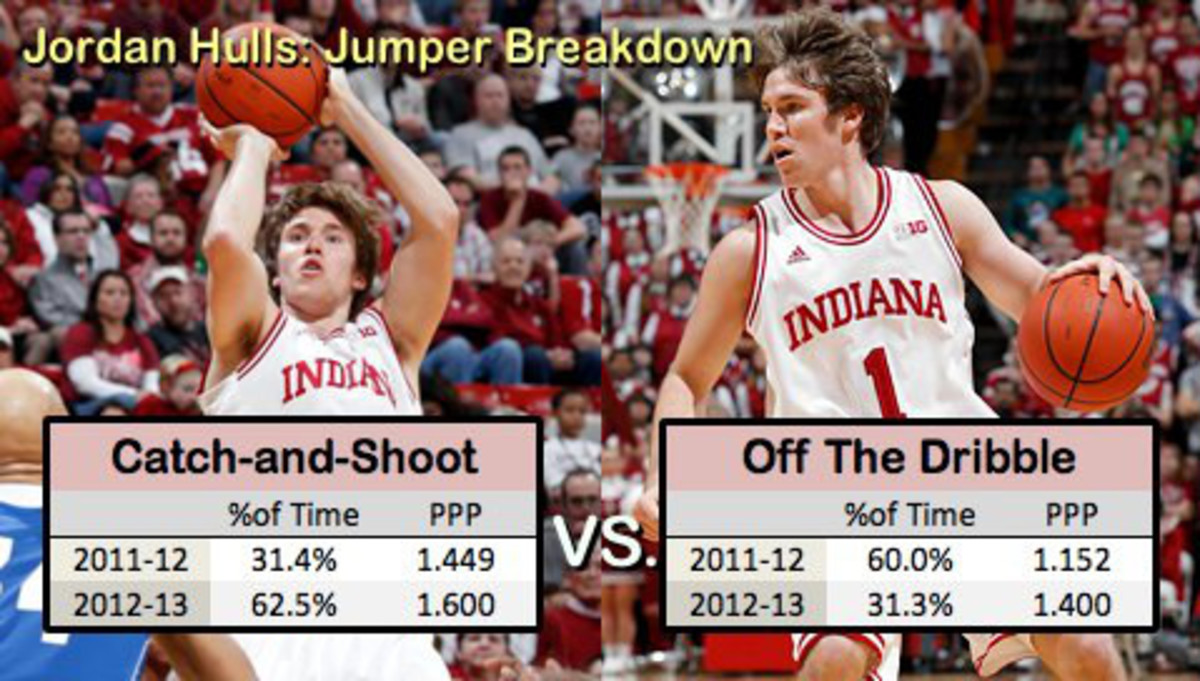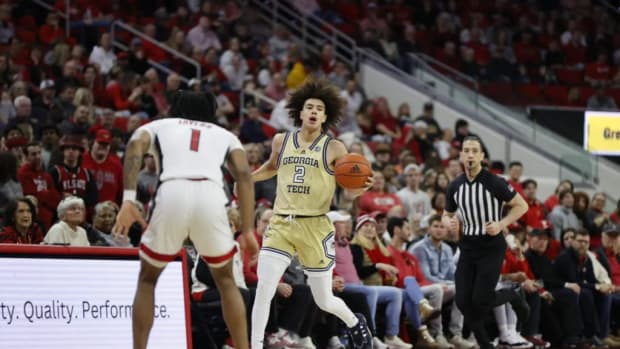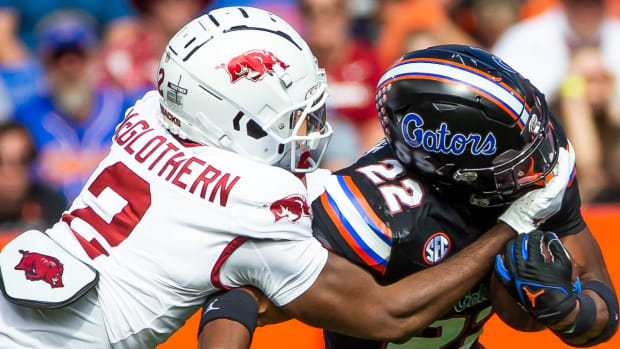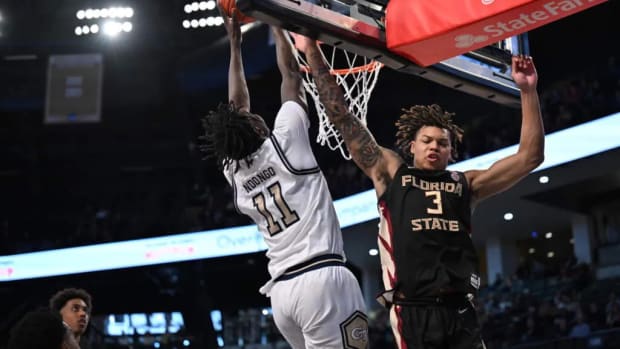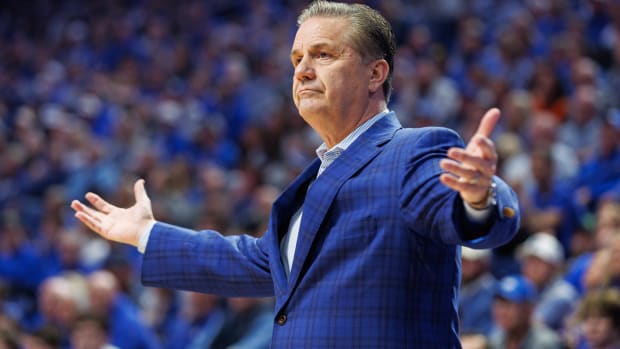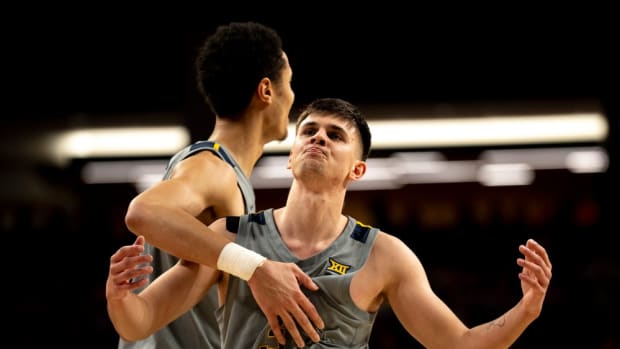Indiana's Jordan Hulls emerges as country's top offensive role player
The prime exhibit of the fine-tuning process is Jordan Hulls, who has developed into the country's most valuable offensive role player. The homegrown senior combo guard has the highest offensive efficiency rating (152.0) of anyone who uses at least 15 percent of his team's possessions. He was effective as a junior, with an efficiency rating of 120.4, but his remarkable senior-season numbers have been fueled by three key adjustments:
1. Shot Re-Distribution
Last season, Hulls made 49.3 percent of his threes and 51.4 percent of his twos, which meant that the expected value of a long-range attempt was 1.479 points, and the expected value of anything inside the arc was 1.028 points. With those splits, taking many twos other than uncontested layups or floaters seems silly ... but Hulls attempted plenty of twos in 2011-12. Take a look at the left side of this shot-distribution chart, which uses data from hoop-math.com:
An unfortunate 48 percent of Hulls' junior-year shots came from inside the arc, and not only that, 39 percent of them were two-point jumpers, the least-efficient shot in the game. Hulls was a nice player, but this distribution left him plenty of room for improvement -- and he's made a distinct change in 2012-13, which can be seen on the right side of the chart.
Now, 75 percent of Hulls' shots are threes, and he's taking far fewer two-point jumpers. This is an optimal shot distribution for a 6-foot marksman who, although he's a steady ballhandler, lacks the size or explosiveness to finish well at the rim.
2. Higher Volume, (Slightly) Higher Accuracy
Hulls' distribution shift has resulted in him taking nearly three more long-range attempts per 40 minutes than he did last season:
The important thing here is that Hulls is getting more threes without having to force the issue. The extra shots are still coming within the flow of the game, and they're still good looks -- and that's why his accuracy has only gone up, to 52.0 percent. Increased defensive attention on center Cody Zeller is opening up even more opportunities for Hulls to take threes, and Indiana is taking advantage of it.
3. Situation Shifting
The arrival of freshman floor general Yogi Ferrell and the offensive growth of wing guard Victor Oladipo has taken some ballhandling pressure off of Hulls -- he had to play far more point guard last season -- and allowed the Hoosiers to significantly shift the way in which he gets his shooting looks.
As a junior, Hulls created 60.0 percent of his jumpers off the dribble, according to Synergy Sports Technology. While he was efficient at this in the context of his peers, scoring 1.152 points per possession, his more valuable looks came on catch-and-shoots, where he scored 1.449 PPP -- but those only accounted for 31.4 percent of his jumpers. If that distribution had been flipped, he would have been a far more lethal scorer ... which is exactly what's happened this season:
Now, 62.5 percent of Hulls' jumpers are catch-and-shoots -- "He's doing a great job of moving without the ball," Crean says -- and he's scoring 1.600 PPP in those situations. With Ferrell running the offense on most possessions, Hulls only has to create his own shots off the dribble when it's absolutely necessary, and his efficiency there has jumped to 1.400 PPP. Hulls has become the unsung hero of Indiana's offense not because he's more accurate, but because he's being used in more valuable situations.
